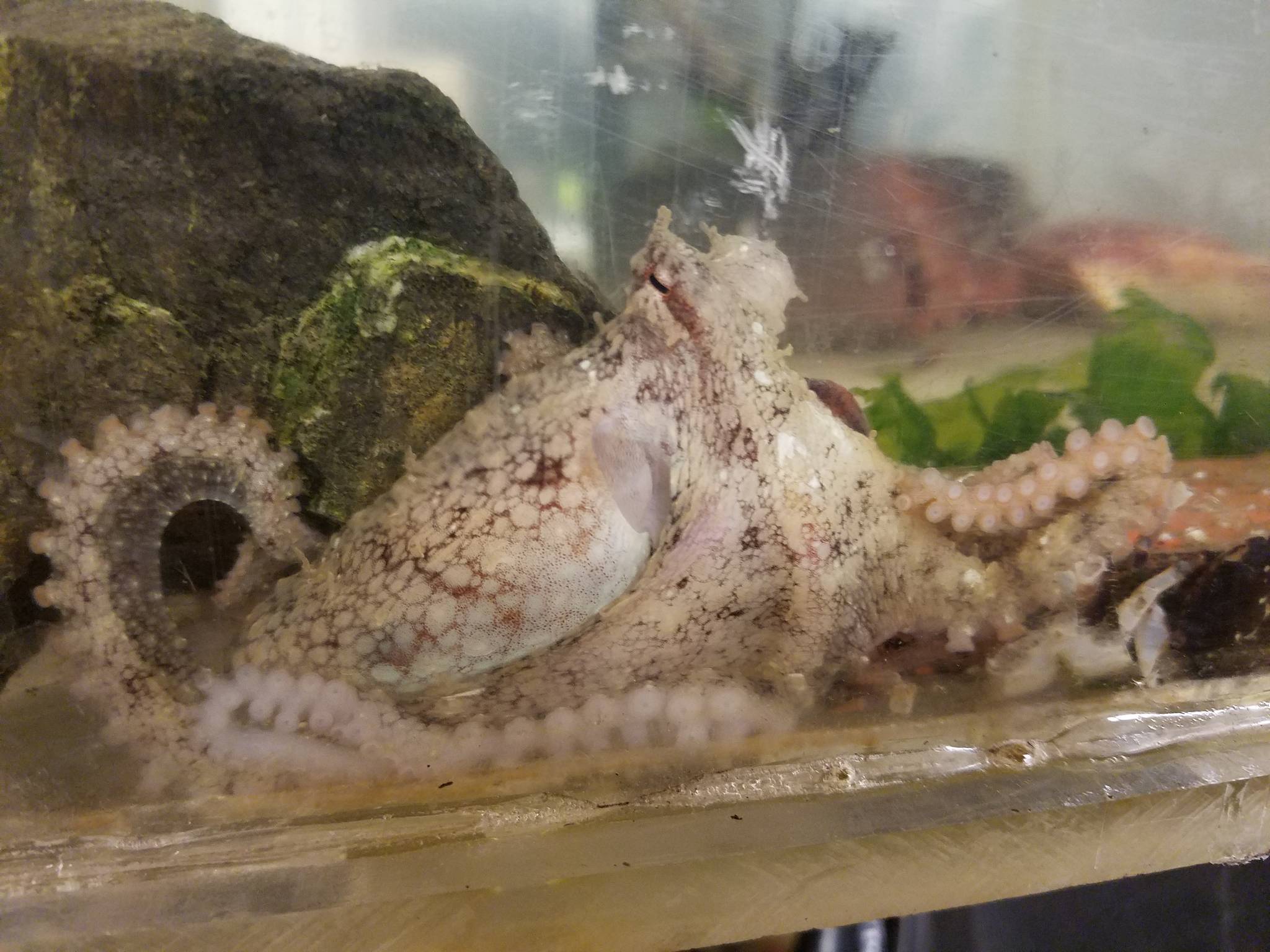Enormous tentacled legs emerging from the deep dark depths of the sea, causing mammoth waves, tossing ships and dooming sailors. That is the legend of the Kraken, a terrifying sea monster likely originating from the octopus, whose appearance resembles no other creature on Earth, yet holds an intelligence and curiosity similar to humans.
“They have an uncanny nature about them,” said Dominic Sivitilli, a behavioral neuroscience graduate student who has been studying octopuses at the University of Washington Friday Harbor Marine Laboratories for several years. “They are strangely familiar in their curiosity … the way they explore their environment or the way they interact with novelty,” he added, noting that the diversity of their personality has never ceased to amaze him.
Sivitilli discussed his research in a talk titled “Octopus, an alternative model for intelligence, distributed cognition,” which focuses on how the arms of an octopus communicate with each other. The talk was free and open to the public at the lab’s commons lecture hall, Wednesday, Aug. 1.
His fascination with octopuses began over five years ago, during a class on fish, Sivitilli told the audience. A baby octopus had been accidentally collected amongst the fish samples. By the time it was discovered, the animal had died. Its skin was still actively camouflaging. Octopus skin is made up of essentially tiny pixels, Sivitilli explained, which are all designated colors. The octopus can contract or enlarge each pixel, allowing the animal to change color and blend in with its surroundings.
“No matter how much time I spend with them, I am always impressed by their camouflage abilities,” he said.
Due to the fact octopuses live in dimly lit environments, octopus are essentially color blind. Scientists have puzzled over how, without seeing what color they are attempting to blend in with, the octopus knows what color to change.
“If you can solve that, you might really be on to something,” Sivitilli said.
Another mystery that Sivitilli is attempting to solve is how its arms, which operate independently of each other, keep from becoming entangled with or separated from each other.
Vertebrates have a highly centralized nervous system, he explained, and an octopus’ system exists mostly in its arms. He described the neural system in the lab’s winter 2018 newsletter, “Tidal”:
“A chain of neural clusters, or ganglion, process the input of tens of thousands of sensory receptors from the adjacent sucker. By outsourcing a large degree of motor and sensory processing into the localized semi-autonomous neural pathways within these chains, the octopus can process this massive amount of sensory information in parallel while relieving the brain of much of the necessary computational burden to respond accordingly.”
In other words, this unique anatomy keeps daily busywork in their hands, allowing octopuses to be ace multitaskers.
Sivitilli also noted in the newsletter that by understanding their model of cognition, scientists may gain a better understanding of cognition in general.
To learn more about how octopuses’ distributed cognition works, Sivitilli and his team of undergraduates have been studying four red octopuses at the labs and a few more at the UW campus in Seattle.
Using high-tech cameras, the team is able to track and monitor the cephalopods’ movements, and the how they use their arms.
Sivitilli has also set up cameras outside two known giant Pacific octopus dens in San Juan County to see how these creatures behave in the wild when they think no one is watching.
During his research, Sivitilli said, he has been shown time and time again the extent of these creatures’ curiosity. Often when the animal gets ahold of something new, be it a net, brush or toy, it will grab on tightly and sometimes try to crawl away with it. On occasion that item is actually someone’s hand, he said, and the person’s first response is to tense up or pull back.
“This (reaction) will make the octopus grab on tighter. I have seen a lot of people’s composure slip when they realize how strong these animals can be,” he said, adding how difficult it can be convincing someone the best thing they can do – as this foreign slimy creature tightly and persistently probes their skin – is relax.
Sivitilli is still compiling data in his studies, but examples of their tool use, curiosity, memory and individual personalities show that a cognizant being is behind the horizontal slit of an octopus eye.
“We should not be asking how intelligent are they, but how are they intelligent,” said Sivitilli.




